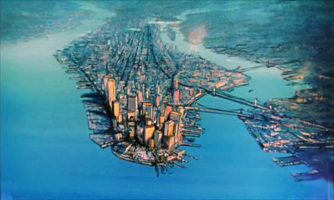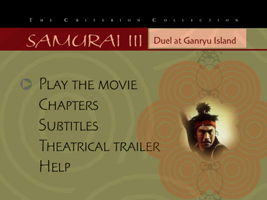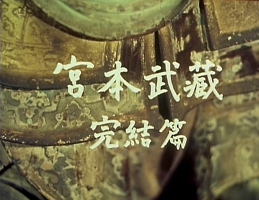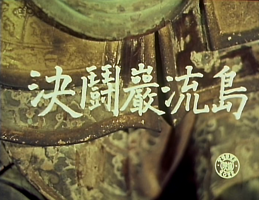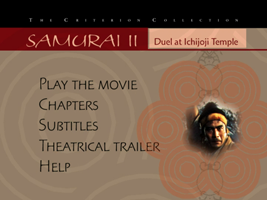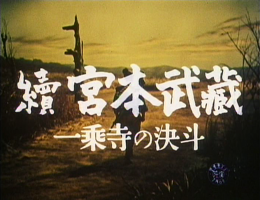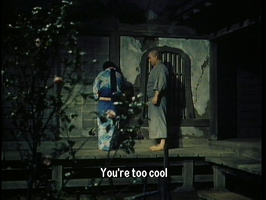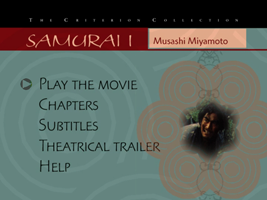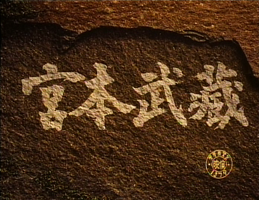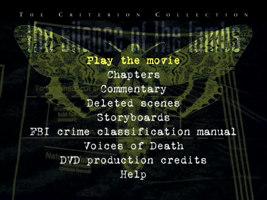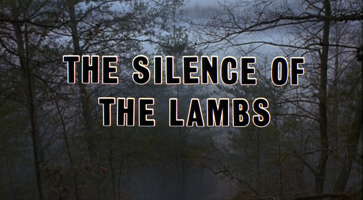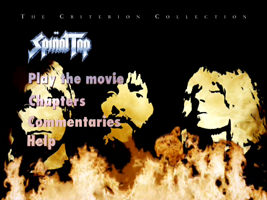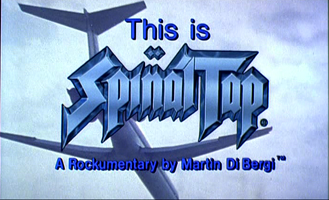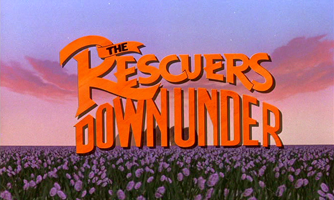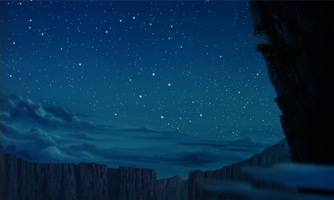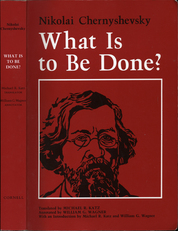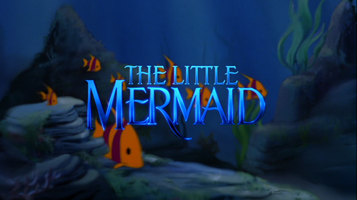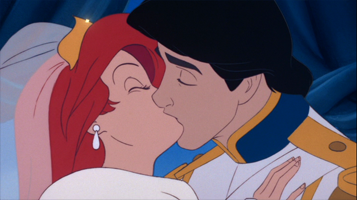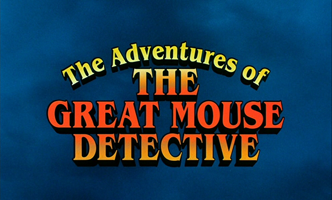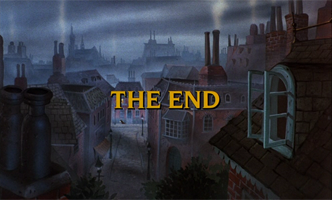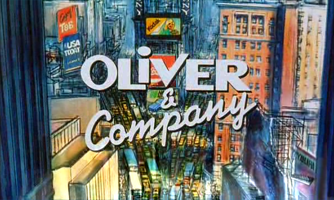
BROOM For our readership and for our future selves, we should begin by acknowledging the circumstances under which we watched this. We found at the last minute that our Netflix disc was cracked and unable to play, so we watched it on Youtube. It had been illegally uploaded at low resolution, in nine segments, by people who didn’t really care about our viewing experience.
BETH They weren’t thinking about us.
BROOM They weren’t thinking about much.
ADAM But I’m glad that they did it.
BROOM Yes, I’m glad we got to watch it, but the video quality and sound quality were terrible.
ADAM I have to say: this movie had panache.
BROOM I agree.
BETH I actually wish we had seen it in better quality.
BROOM Me too. At first I thought, “Well, it doesn’t matter how we watch this one because it’s just gonna be complete garbage.” But then it wasn’t, and I ended up wishing we could have seen more detail and been more discerning about it.
BETH It wasn’t as bad as the last two.
ADAM The last, like, ten.
BROOM I had been anticipating that we would see The Little Mermaid as a sudden rebirth out of ashes. But I actually saw this as sort of a halfway point, building toward that from where they’d been.
ADAM This is like the Cimabue before the Michelangelo.
BROOM Well, I don’t know about that. I just mean that there was all kinds of stuff going on here that we hadn’t seen in a long time.
ADAM Like it was funny.
BETH Yeah. I mean, in parts it was. And the songs were decent for once.
ADAM There are at least three songs that I am still humming right now. Even if one of them is just the phrase “You and Me Together“…
BETH I felt like they ripped off their own movies, a little bit. Like Lady and the Tramp.
BROOM I was surprised to find myself thinking that of Lady and the Tramp, Aristocats, and this, which all cover the same territory…
BETH You would pick this??
BROOM Well… just that this was more fun than Aristocats. By far.
BETH Oh, yeah. But Lady and the Tramp is better than this!
ADAM There were little touches that were really good, things that they clearly took pleasure in doing right. When Georgette jumps away in fear from Dodger, her mirror wobbles and crashes, even though it could easily have just stayed there.
BROOM I thought everything with Georgette was good. I thought her musical number was a huge blast of adrenaline for the Disney organization.
BETH That number was surprisingly good. Bette Midler was entertaining.
BROOM They’re trying to get back to putting on musicals. Snow White was a musical, Cinderella was a musical — but they’ve really lost their way. Horribly so, by The Fox and the Hound, which is the last time that we had a song. Oh, wait — there were songs in The Great Mouse Detective, but they were really awful and wrong-headed. So now they’re trying to figure out what kind of songs constitute a fun family musical in this era, and here we saw several different styles being tried — the Huey Lewis song at the beginning, the Billy Joel song… And then in the middle of this is the mock-“Broadway song,” and it lights up the screen! That kind of theatrical overkill works with animation. I’m not sure how much it’s really a throwback to where they started — Bibbidy-Bobbidy-Boo, say, isn’t really a quote-unquote “Broadway number” — though I guess it’s sort of in line with how Broadway numbers were at the time. Anyway, this new showbiz razzmatazz is really a fresh choice for them, and the animators took to it like…
ADAM Like leg-warmers.
BROOM Like leg-warmers to a poodle. And that’s the direction they’re going to go. They’re going to hire Alan Menken and Howard Ashman to do Little Mermaid, I’ll bet, because of this realization that Broadway aesthetics are their future.
BETH But the drawing style was still that sleazy, cheap style, and not what we’ll see in The Little Mermaid. Little Mermaid looks more like Cinderella than it does like this.
ADAM Well, I think Little Mermaid is not going to look as good as we think.
BROOM I think that’s right, though it’s certainly better than this.
BETH Okay, fine, but The Little Mermaid looks wholesome and not sleazy. I actually loved the bad guy in this, but I didn’t think he was appropriate for children.
ADAM This is like our eighth kidnapping of a little girl.
BETH It’s like the fourth in a row, for real! And as a kid who was afraid of kidnapping: duh, no wonder I was! Everything had kidnapping in it!
ADAM …of a little red-haired girl!
BETH Yes! That’s not good for kids!
ADAM Not for girls.
BROOM Well, really scary threats get kids involved.
BETH They tied her wrists up. Everything that I feared happened to that girl. Except that she was okay in the end.
BROOM Were you afraid of black men — slash, dogs — prowling around you?
ADAM Those dogs were pretty negro, in a way that was uncomfortable.
BROOM We always have to make a little effort to try to find some racism to talk about, but those dogs really made me go “whoa! Weird choice for 1988.” But on second thought, it’s not weird for 1988.
BETH It’s New York, you know? They had a Hispanic dog, too…
BROOM They were all diverse stereotypes, it’s true. I felt a little bad for the brunette woman dog, who really didn’t have a role.
ADAM Well, she was black too.
BROOM She was?
ADAM Rita?
BROOM I don’t know what her name was. And I didn’t know she was black. [ed: Adam is right.]
ADAM This is probably the only Disney movie that is self-consciously about New York. The Rescuers starts in New York, but they leave. It’s not really about New York like this was; it doesn’t have three songs like “New York Is Bad!” “New York Is Cool!” “New York Is Glittery!”
BETH This was definitely about a real place in contemporary times.
BROOM Yes, this is their only New York movie. Unless you count Little Toot.
ADAM Or that one… what was it called…
BROOM The Whale Who Wanted to Sing at the Met?
ADAM No.
BROOM You’re lucky I’m here to remember this stuff.
ADAM The one about the 1890s couple…
BROOM Johnnie Fedora. Yeah, that was set in ye olde New York.
ADAM It’s striking to me, as someone who is living in New York and someone who was obsessed with depictions of New York as a kid, that this is not a movie that would be made today. This is a New York full of ethnic toughs, and crime, and graffiti in the subway, and class hatred…
BETH It felt like a pretty accurate rendition of New York as it was in 1988.
BROOM Well, it looked pretty clean. I think the city was a little more dangerous and dirty than they showed it here. Unsurprisingly.
BETH But the cars looked like that, styles looked like that, people looked like that.
ADAM I’m not saying this was inaccurate; I’m saying that it’s really striking that everything is so different now. No one would ever even think to make a movie now where the good guys are like “‘Eyyyy, get outta my way!”
BROOM That image of New York was a running thing for at least two decades. I think of that vibe as the birthplace of Sesame Street. The idea that those loud people on your block, the people that you see out on the stoop: they’re the city, and that’s wholesome. I was used to that as a kid; that’s what I thought New York meant.
BETH It’s like Muppets Take Manhattan-style New York.
BROOM Yeah, where she gets mugged in Central Park and it’s just a gag for atmosphere.
ADAM That happens in Tales of a Fourth-Grade Nothing, too. Well, at least that they’re all wary of muggings in Central Park because all of their friends have been mugged. I’m really grateful that that’s not what the city’s like, now! I would not particularly enjoy living in a filthy urban maelstrom.
BROOM You were laughing during the sequence with all the feet at the beginning, when a guy came out at the beginning in high tops and started doing a cool dance in the street, but I kind of enjoyed that part, because it was like, “hey, look at all the different feet from 1988!”
BETH Yeah, I thought they did a good job with that.
BROOM I wish there had been some music there, but I guess there were probably sounds that we couldn’t really hear because of the quality. I feel like we watched this while taking a shower — like it was going on in the other room. I wouldn’t mind seeing it again some day. Of course, we don’t need to gather like this and see it again together.
BETH No, we don’t.
BROOM I thought the most important thing that they’d rediscovered was timing, which I keep saying the movies lack. This one, finally, had a sense of timing. The sequences flowed.
ADAM And did not drag.
BETH It felt really fast, in fact.
BROOM It did go really fast because it didn’t have wasted time in it. It had exactly the same amount of material as — if not more than — The Great Mouse Detective, but it didn’t waste time.
BETH It was maybe four minutes shorter than the average.
BROOM So all this said, about how we were expecting total crap and it turned out to be kind of entertaining… how good was it really? Not that good, right?
BETH Not that good, no.
ADAM Well, it’s probably in the top half, honestly.
BETH How many have we seen?
BROOM This is number twenty-seven.
BETH It might be in the top twenty…
ADAM Well, is it in the bottom fifteen?
BETH I think it might be, yes.
ADAM I don’t know. Did you think that, like, Sleeping Beauty was really all that great?
BROOM I would definitely watch Sleeping Beauty over this.
ADAM That’s just because Sleeping Beauty is like “a claaaassic.”
BROOM This is a good point. Because a lot of what I would prefer about Sleeping Beauty over this is really specific to the era. I keep saying that things seem harsher in the 80s, and this does seem harsher. Sleeping Beauty puts you into more of a comforting place. Though it’s not a perfect example…
ADAM I chose Sleeping Beauty because that one was actually pretty boring.
BROOM But it looked like a million bucks. I mean, maybe this one would have looked like a million bucks if we saw it in high-definition…
BETH No. It would not have.
BROOM The background art had that grainy quality that was popular in the 80s. They gave me a really 80s feel of, like [hums “Alvin and the Chipmunks” theme]. You know how at the beginning of that show they go through a trap door and down a slide in nowhere-space? It all reminds me of that — it’s not fully-conceived space.
BETH There was a slide like that in this movie.
BROOM That’s right, in that factory. What does Sykes manufacture? Not clear.
ADAM Hooks.
BROOM Sykes’s death in a head-on train collision was a little rough for my taste.
ADAM Frankly, his dogs being electrocuted on the subway tracks wasn’t too great either.
BROOM That sequence seemed to me to have been taken from the mine cars in Indiana Jones and the Temple of Doom, which came out a couple years earlier. Also, how did the movie Annie end? Don’t they climb up a bridge at night like that?
BETH I don’t know, but the girl was dressed just like Annie.
BROOM And there was a fair amount of Annie in her whole Fifth Avenue life. Do either of you know much about the real Dickens Oliver Twist? Is Fagin just a pathetic schlub beholden to Sikes in the original source? I thought Fagin was the bad guy.
ADAM I don’t know. I thought so too.
BROOM It’s weird that this is an all-dog type of movie, and yet Fagin, Sykes, and Penny are all people.
ADAM Jenny, not Penny. You’re thinking of Inspector Gadget.
BROOM Actually I’m thinking of The Rescuers. Anyway, why did they make Fagin a person? A really ugly person, no less?
BETH That’s something I was thinking: Why would any kid want to watch a bunch of mangy animals and an ugly guy?
ADAM Well, why do you want to read about Jon and Odie? Or Dave and Alvin and Simon and Theodore? Or the man in the yellow hat?
BETH But there’s a benign quality to Garfield that wasn’t true here.
BROOM The only reason I liked reading Garfield as a kid was because it was cleanly drafted. Garfield looked like an icon, like you could click on him.
ADAM Garfield may not be pleasing to deal with, but he’s in control.
BROOM Garfield looks exactly like Garfield, and that’s gratifying. Fagin here was blobby and inconsistent. I really didn’t like looking at his scraggly teeth in his coconut mouth.
BETH He was just dirtiness and ugliness. He was hard to love looking at.
ADAM Do you think Dodger got off the hook for being such a cold-hearted villain at the beginning, when he took the sausages from Oliver? We never really had it out with him about that.
BROOM I wasn’t sure that I liked Dodger as much as the movie liked him.
BETH He was like the Tramp from Lady and the Tramp but not charming.
ADAM It sounded like Billy Joel was trying to do the voice of the Tramp.
BROOM The Tramp knew more. I don’t know what Dodger knew. This was one of those “character movies,” where you get to know a gang of characters, and for the most part they didn’t grow on me. I guess I had some kind of a soft spot for Francis.
ADAM Playing Mr. Belvedere.
BETH Well, I liked the chihuahua.
ADAM Yeah, when I wasn’t cringing.
BROOM To me there was something uncomfortable about his lust for a dog three times his size. Anyway, as I’ve said before, that appeal to character familiarity is a dangerous way to make a movie work: “You love them, don’t you?” I guess I was sort of amused by the scene when he read them their bedtime story and it was something really inane.
ADAM Eh. That was just like Wendy and the Lost Boys. Everything in the movie was a little bit of something else.
BROOM Yes. It was just garbage, but it was garbage with panache. For a change.
BETH So… two and a half stars instead of one and a half stars.
ADAM I have lots of memories specifically of the year 1988. This is a thing we could easily remember doing.
BROOM And yet not a one of us saw it when it came out.
[we read Vincent Canby’s unsparing review]
BETH That was full of residual anger for what had happened to the Disney brand.
ADAM But totally justified!
BROOM Where was he for the past 15 years, then?
BETH Yes, it didn’t acknowledge how long things had been this bad. I think if you were coming to this not having seen a Disney movie in 10 years, you’d be like “what happened?”
BROOM But look, Vincent Canby wrote that review of The Fox and the Hound in 1981.
ADAM Which was a totally cynical, offhand review.
BETH He wrote about Fox and the Hound and didn’t say it was bad?
BROOM He just didn’t really talk about what had happened to “Disney” per se.
ADAM Well, Fox and the Hound does look better than Oliver, doesn’t it?
BROOM I don’t know about that.
BETH Yes, it does. It has a style that’s cohesive with their brand.
BROOM But remember that “big mama” bird? That was awful. I think he was a little harsh on the animation in this one. I didn’t like Fagin but I was okay with several of the dogs.
BETH I think he wasn’t distinguishing between animation and character design. Character design back in Fox and the Hound was more like standard Disney, but then it took a hit and became much more Saturday-morning style.
BROOM Yes. And I don’t know if we’re going to ever get back to where we were.
BETH No, I don’t think they do get that back.
BROOM They just find something new, something suited to the 90s.
ADAM I feel like we’re at… “this could be the start of something good.”
BROOM But that review made me wonder. When he said “how dare they,” I thought, “but this is what they’re going to end up doing. They’re just going to do it better.”
ADAM Well, let’s see what happens when it’s better, and see how we feel about that!
BETH I’m prepared not to like things as much as I thought.
BROOM So: show this to your kids, or not?
ADAM I mean, if it was on TV I’d let them watch it, but I wouldn’t make a point of showing this to them.
BETH Sure, but not until they’re a little older — at least nine or ten.
BROOM To deal with the kidnapping themes.
BETH Yes, and the bad guy.
BROOM That seems a little overprotective to me. It might be a little scary but I don’t think it has its values too screwed up.
BETH I just think it’s a little bit sleazy.
BROOM The closer to the present we get, the less I’m able to feel that there’s anything dangerous in these. They might have their value systems skewed and be ugly and mean-spirited, but they also don’t get at your gut. If Bambi showed the mother being killed, with all the impact that had, and then they followed that scene by telling Bambi, “time to get revenge!” I might feel that that was dangerous because it really sends a message. These don’t have the power to send messages any more. Like, who knows what really happened on Inspector Gadget? I watched plenty of episodes of that, and I’m sure it was full of insensitivity, but who cares? It didn’t go anywhere in me.
BETH That’s much more harmless than this. I felt like this bad guy was a real bad guy. He felt scary like a real person who could kidnap me.
ADAM He was a mobster and not, like, a wizard.
BROOM I liked that the murky underworld that was supposed to be like being down in the fog by the Thames was actually DUMBO. At the time maybe that was a sleazy place.
BETH I already forget: what was the last one called? Sherlock Holmes?
BROOM Sherlock Holmes and the Adventure of the Baby Mouse.
